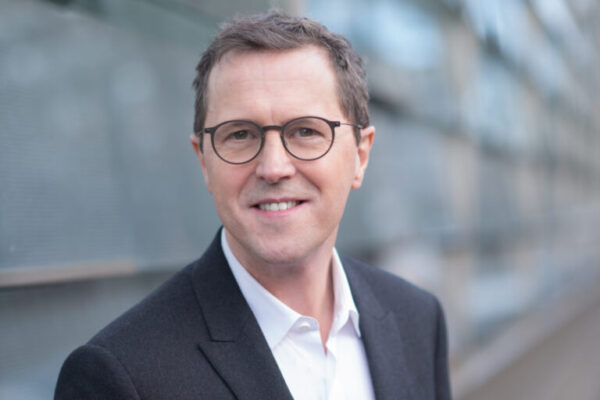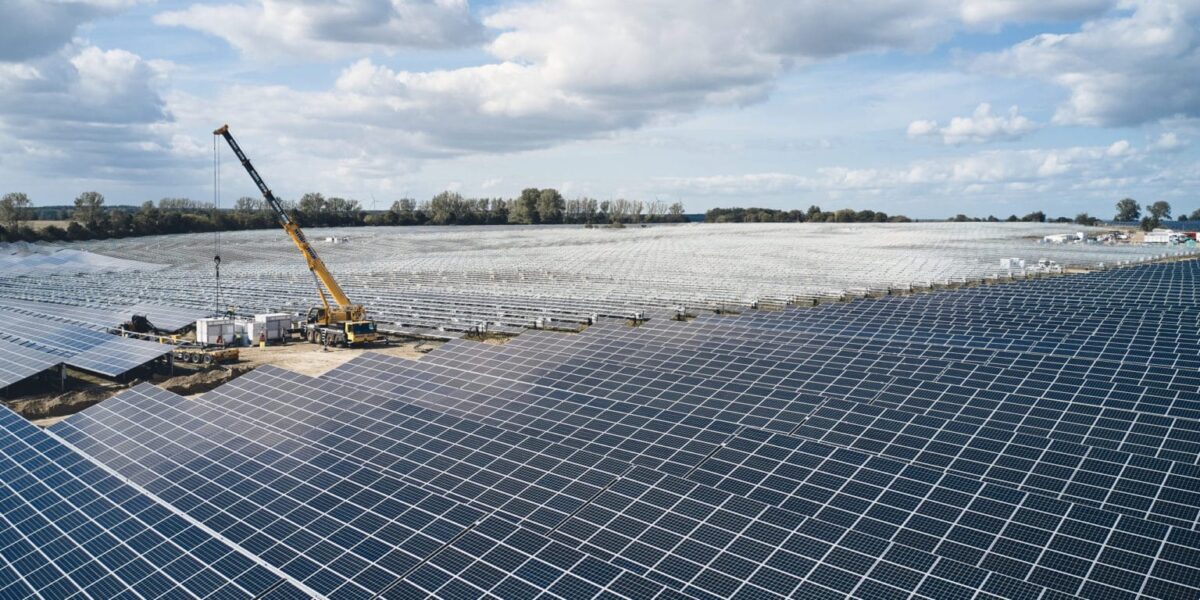pv magazine: Enerparc is an engineering, procurement and construction contractor and an independent power producer. Politicians and potential manufacturers are currently ramping up efforts to restore European PV production, covering the entire manufacturing process from silicon to wafers, ingots, cells, and modules. Does this interest potential module buyers?

Stefan Müller: Absolutely yes. We also welcome the topic. This is also known in the residential sector. There are many arguments and also marketing campaigns for buying local products. It works very well there, because this purchase is also an emotional decision. We are now seeing more and more that classic corporate PPAs are being signed with larger corporations, for which energy is only part of the whole. For them it's more important to have a good story. And a good story means that they not only reduce their CO2 footprint, but also when the products come from Europe and Germany.
Has something changed in recent years?
Yes, but things are a bit different for energy suppliers. They would perhaps pay a cent more per module, and that would ultimately make the kilowatt-hour of electricity 0.3 cents more expensive. But that is not the only benchmark. I think there is a willingness to pay higher prices out there. Especially for corporate buyers with a strong brand, whose products only partially have something to do with energy.
First we have to look at the market. On the one hand there are power purchase agreements, on the other hand, there are tenders. The latter is obviously about the cheapest price. Are tenders still relevant to you?
Of course we still do that. These are a good basis for getting good basic financing for medium-sized systems. We continue to be active in the market where we market our electricity directly on the stock exchange. But we are now just as strong with real corporate players who not only want energy purchase agreements, but also want to do the developments together with us. A good example is our collaboration with Ikea in Australia. A number of corporations want to do a one-stop shop, the development, support during construction, support with product selection and quality assurance and then hand over the operation to us.
The corporations then hold the plants?
That is different. For example, Ikea holds plants. But we treat the facilities as if they were ours and look after them as such. On the other hand, we also have classic energy consumers or listed companies. These are companies that are, so to speak, trapped in their tendering model. These are, for example, large automotive groups that always have to make the classic tender if they want to own assets. This is difficult to implement in this dynamic world of renewables. If we then develop projects together, we own the system, but make an energy purchase agreement in advance. Sometimes with a cable over the fence, sometimes as a virtual PPA where you sell the quantities produced.
Why does it get too complicated when corporations advertise projects?
It's because of their processes. There are very clear specifications such as RFI, RFQ, i.e. information and offer queries, and at the end the negotiations have to take place. If it says “binding period for nine months”, then that's no longer feasible for us in the industry. The risk cannot be represented in this way.
Because the prices in solar change quickly?
Yes. And of course, as a public company, an automobile company is bound to always take the cheapest price. We know that cheap is not always the best quality. And project development tends to take longer, and a price guarantee for nine to twelve months is a risk that costs additional money.
That means there are buyers who look very closely at the costs. So does it become difficult to use European modules when they are 5% to 20% more expensive?
Exactly. But if, for example, you go into energy trading with the big companies, i.e. if we plan a plant, keep it and sign a PPA contract, there is a different dynamic. Corporate energy traders or buyers know that the market is very dynamic. They are then also open to concluding a short PPA or a PPA over 10 or 15 years. The negotiations are interesting.
But they probably also lack the emotional component to pay more for electricity from European modules.
On the other hand, these companies have another component. The location, for example, plays a major role for them. We recently built a solar system with Volkswagen in Zwickau at their plant and are now building a second one. Their principle is very clear: please close to the factory, because they want to make the solar fields visible to everyone who picks up their e-vehicle there. So there is an emotional component as well.
Would such players spend more on European modules?
Let me put it this way: The talks are there and the interest is there.
Does that mean there is interest?
Yes absolutely. And that goes beyond this one cent per watt, which is what is now being traded in our industry.
What is the extra price you can imagine?
Popular content
My feeling tells me that it can be up to 10% or 20% more.
Nice for European manufacturers. But you don't build up an industry if you set a goal of 10% to 20% of additional costs from the outset.
That's correct. That shouldn't even be the goal. I think the goal must be that we get very high quality with a low CO2 footprint, with high added value, an “always-availability-guarantee” and with a long product guarantee overall. Germany is certainly the pioneer here. And that's where customers are already looking, and not just in the residential sector.
What other trends do you currently see in the market?
We have just connected our large photovoltaic power plant with storage. An incredible amount is happening there. Separate storage systems are now also being offered that are not planned in combination with wind and solar. Why not? Building permit is easier and grid connection is easier. I believe that an interesting market is developing there. The big question is who is the driver, investors or network operators?
In the past it was a regulatory problem because the network operator was not allowed to serve all business models.
He could write it out, or he can even release network points if he were to act transparently. He doesn't always.
Standalone storage already existed in connection with the primary control reserve.
And he was always under incredible pressure. There was a huge cannibalization. But when I see the young startups that are active in all business models, it can be exciting. I also find the topic of making energy consumers more flexible very exciting. An unbelievable number of new start-ups are bustling about there. Whether that's vehicle-to-grid, whether that's the bundling of energy purchase agreements. The latter is important because the smaller companies also want to decarbonize and need cheap electricity that cannot conclude a PPA on their own.
Industry needs cheap electricity. It used to be possible to generate solar power for 4 cents per kilowatt-hour. With the high interest rates, these times are over for now, right?
I don't want to say that it's completely over now. But we realize that we really did live in a very good time with low interest rates that were so low that you can no longer even imagine it. The high interest rates really add to the costs. The cost of capital is crucial.
Where are the electricity production costs at the moment?
It also depends on the size. The last Renewable Energy Act tenders averaged around 7 cents. That reflects the situation.
When can the costs go down again?
When interest rates go down or when there are other business models. I believe that if you model for 30 or 35 years, which classic corporate buyers also do, then the values can change again.
That in turn depends on the risk you want to take and whether you can build your financing on that.
Exactly. You don't get financing for 30 years with guaranteed interest. At most 10, maybe 15 years. That's actually the difficulty. But I think other business models will also develop there. We are also talking to very large players who basically do everything with their own capital. They also have a different approach. Some time ago we also sold our America business with the Lego family. They have completely redeemed all loans for the time being. They do it all with equity.
They have money left over and don't even know what to do with it?
Exactly. money is in the market. They also want to generate a return, that's clear. But they can model it a little differently.
This content is protected by copyright and may not be reused. If you want to cooperate with us and would like to reuse some of our content, please contact: editors@pv-magazine.com.


By submitting this form you agree to pv magazine using your data for the purposes of publishing your comment.
Your personal data will only be disclosed or otherwise transmitted to third parties for the purposes of spam filtering or if this is necessary for technical maintenance of the website. Any other transfer to third parties will not take place unless this is justified on the basis of applicable data protection regulations or if pv magazine is legally obliged to do so.
You may revoke this consent at any time with effect for the future, in which case your personal data will be deleted immediately. Otherwise, your data will be deleted if pv magazine has processed your request or the purpose of data storage is fulfilled.
Further information on data privacy can be found in our Data Protection Policy.